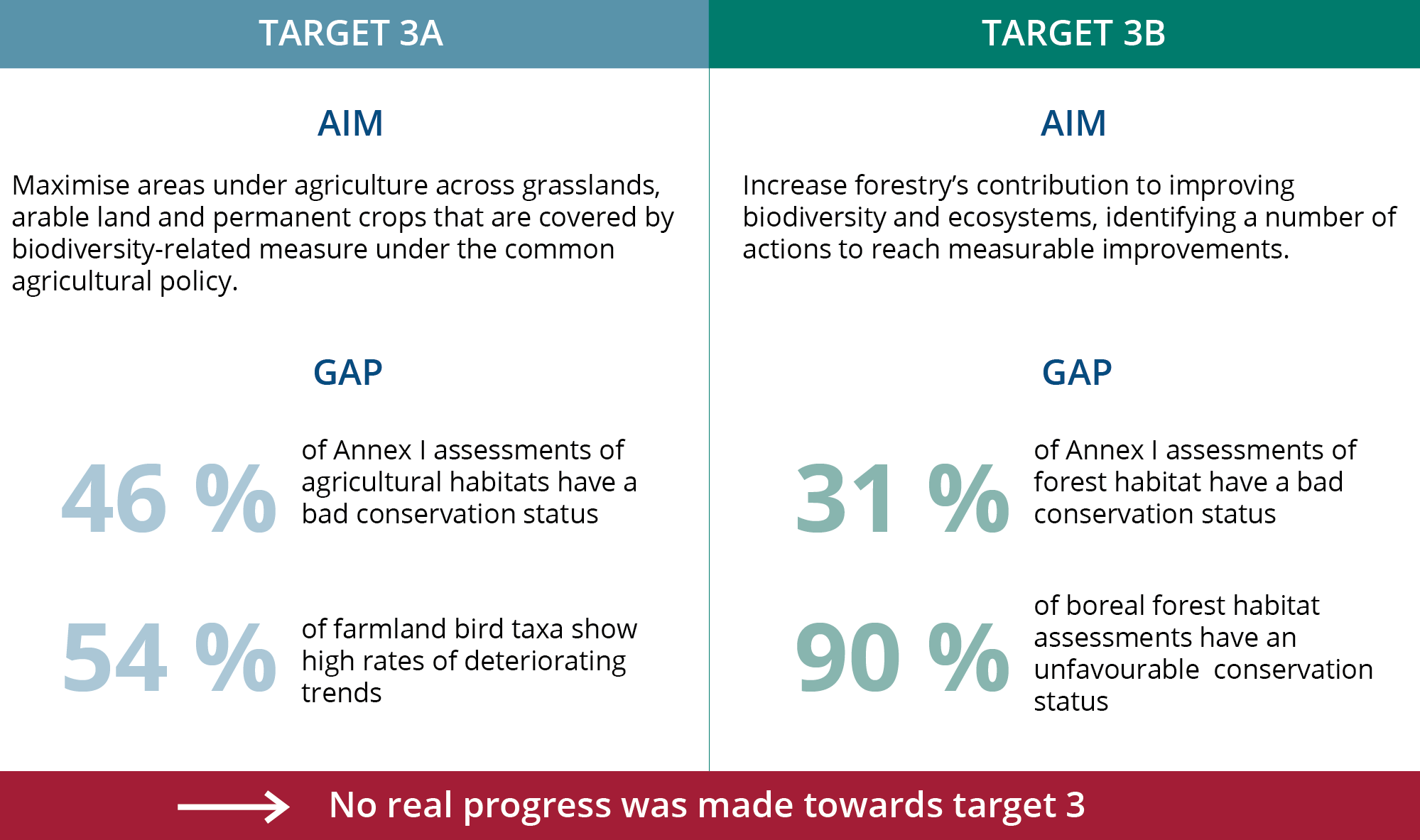The European Union (EU) biodiversity strategy to 2020 reflected the commitment to halt the loss of biodiversity and the degradation in the EU. Our latest assessment indicates the EU is not on track to meet the 2020 target of improving the conservation status of EU protected species and habitats (Target 1).

Unsustainable agriculture and forestry are two of the largest contributors driving biodiversity loss in Europe. When combined, these two sectors represent more than two thirds of the entire EU terrestrial area. 45 % of agricultural habitats are deteriorating and no more than 8 % show improving trends. Although progress remains limited, 54 % of all forest habitats show stable or improving trends, but this varies considerably between different forest types.

The new EU Biodiversity Strategy for 2030 and the Farm to fork Strategy, both core elements of the European Green Deal, bring a renewed hope for urgent and coherent action for the conservation and restoration of Europe’s biodiversity.
For the complete analysis on bird populations, see the latest EEA report on the ‘State of nature’
Background information
The EEA assessment on the ‘State of nature’ reports on the progress made towards Targets 1 and 3 of the EU biodiversity strategy to 2020. Target 1 commits EU Member States to a full implementation of the Birds and Habitats Directive and to achieve a significant and measurable improvement to the status of all species and habitats. Target 3 aims to achieve more sustainable agriculture and forestry.


Document Actions
Share with others